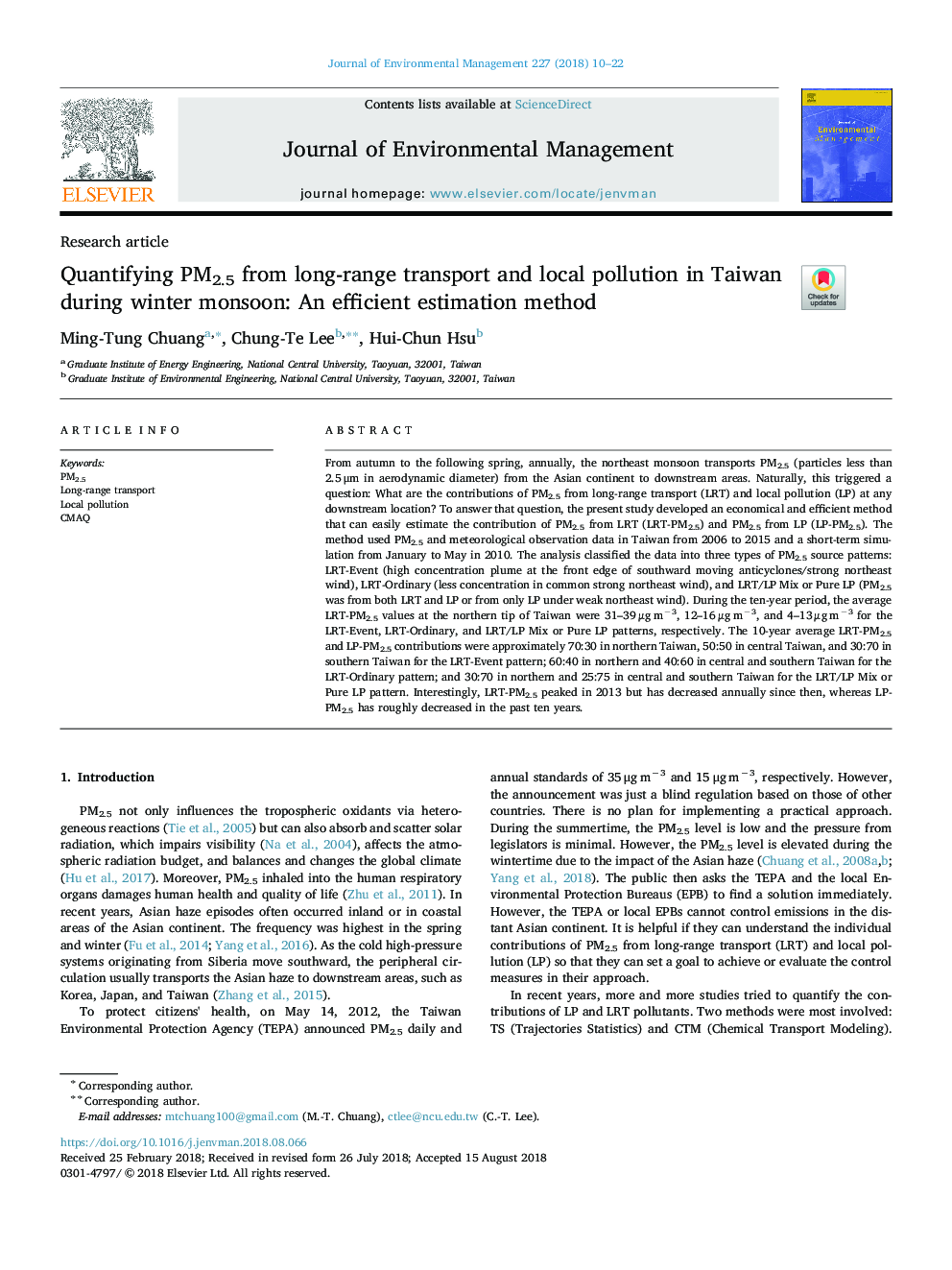| Article ID | Journal | Published Year | Pages | File Type |
|---|---|---|---|---|
| 8954709 | Journal of Environmental Management | 2018 | 13 Pages |
Abstract
From autumn to the following spring, annually, the northeast monsoon transports PM2.5 (particles less than 2.5â¯Î¼m in aerodynamic diameter) from the Asian continent to downstream areas. Naturally, this triggered a question: What are the contributions of PM2.5 from long-range transport (LRT) and local pollution (LP) at any downstream location? To answer that question, the present study developed an economical and efficient method that can easily estimate the contribution of PM2.5 from LRT (LRT-PM2.5) and PM2.5 from LP (LP-PM2.5). The method used PM2.5 and meteorological observation data in Taiwan from 2006 to 2015 and a short-term simulation from January to May in 2010. The analysis classified the data into three types of PM2.5 source patterns: LRT-Event (high concentration plume at the front edge of southward moving anticyclones/strong northeast wind), LRT-Ordinary (less concentration in common strong northeast wind), and LRT/LP Mix or Pure LP (PM2.5 was from both LRT and LP or from only LP under weak northeast wind). During the ten-year period, the average LRT-PM2.5 values at the northern tip of Taiwan were 31-39â¯Î¼gâ¯mâ3, 12-16â¯Î¼gâ¯mâ3, and 4-13â¯Î¼gâ¯mâ3 for the LRT-Event, LRT-Ordinary, and LRT/LP Mix or Pure LP patterns, respectively. The 10-year average LRT-PM2.5 and LP-PM2.5 contributions were approximately 70:30 in northern Taiwan, 50:50 in central Taiwan, and 30:70 in southern Taiwan for the LRT-Event pattern; 60:40 in northern and 40:60 in central and southern Taiwan for the LRT-Ordinary pattern; and 30:70 in northern and 25:75 in central and southern Taiwan for the LRT/LP Mix or Pure LP pattern. Interestingly, LRT-PM2.5 peaked in 2013 but has decreased annually since then, whereas LP-PM2.5 has roughly decreased in the past ten years.
Related Topics
Physical Sciences and Engineering
Energy
Renewable Energy, Sustainability and the Environment
Authors
Ming-Tung Chuang, Chung-Te Lee, Hui-Chun Hsu,
